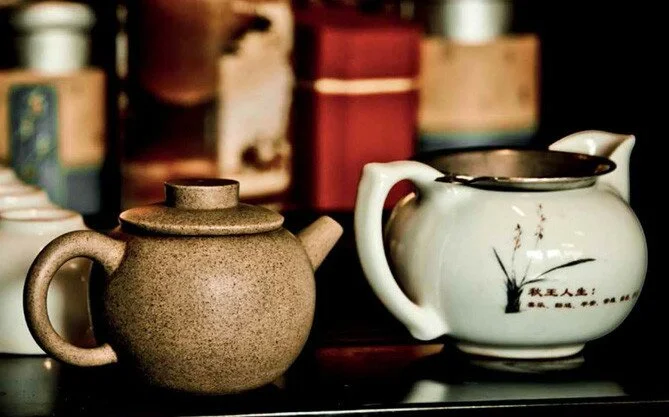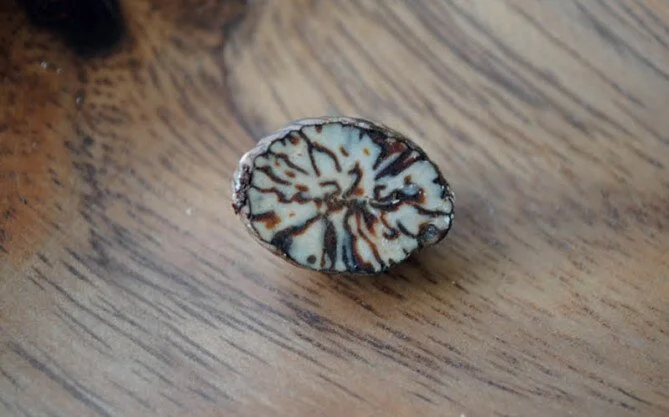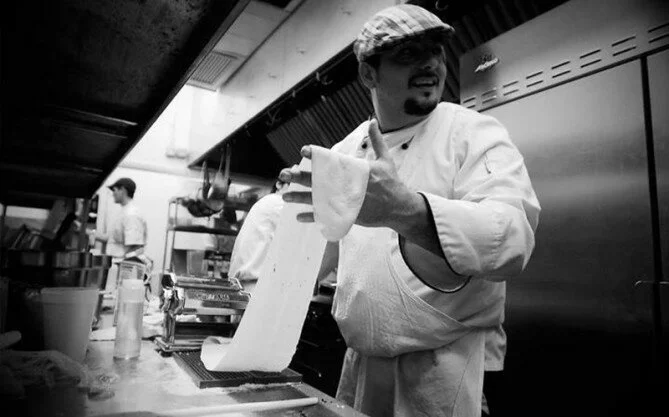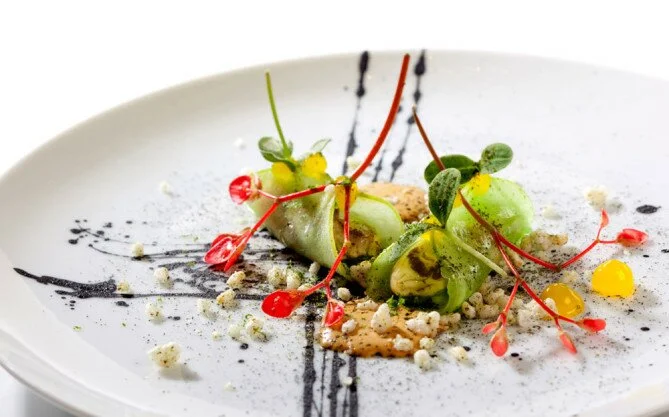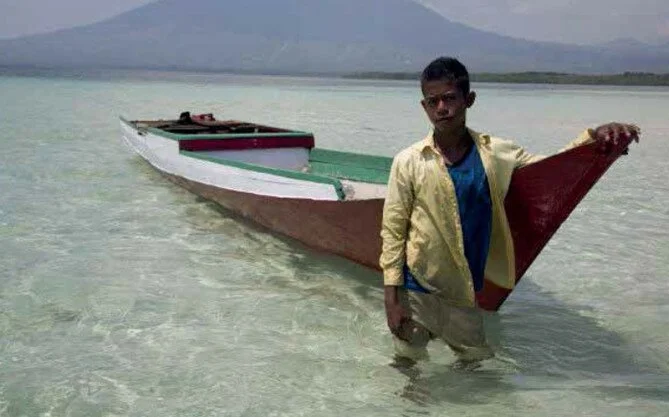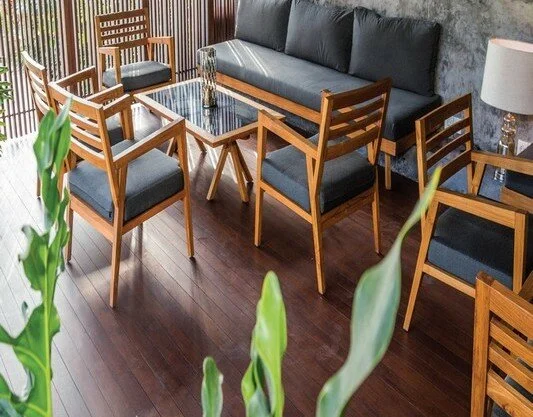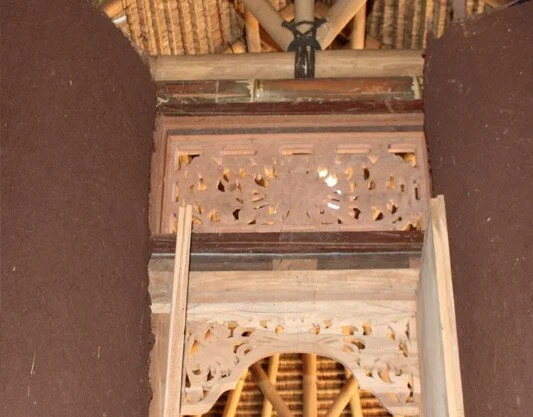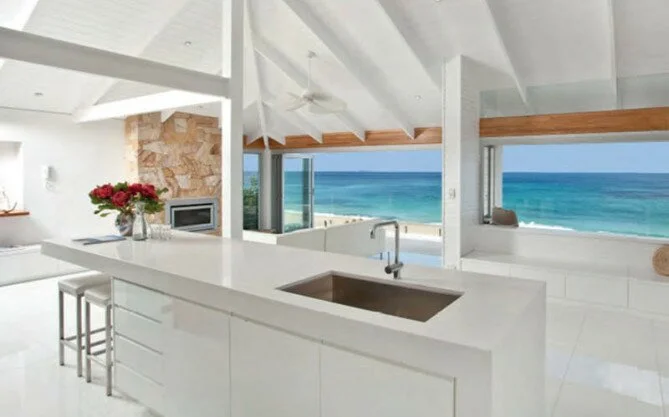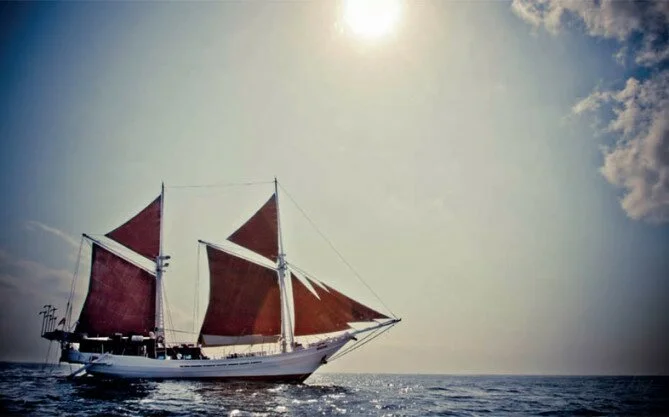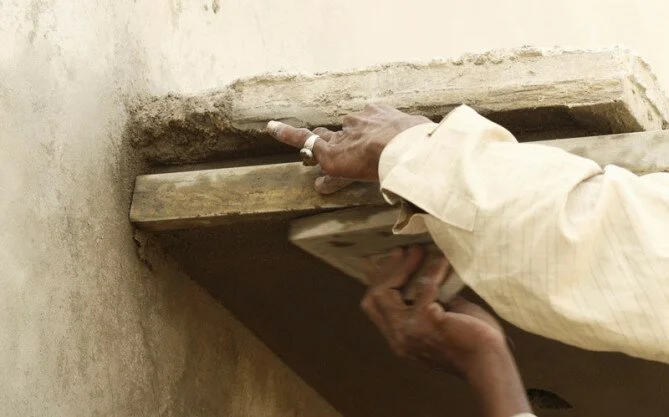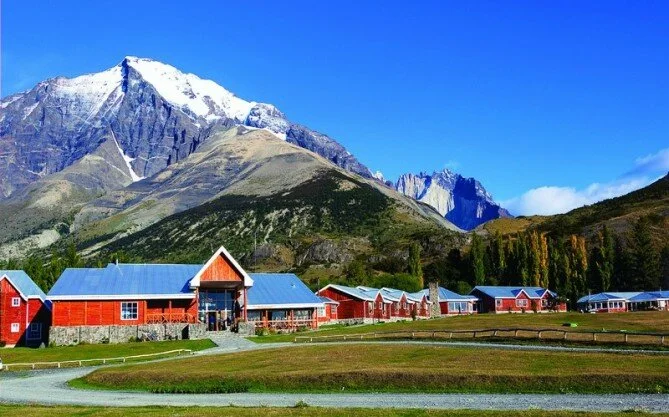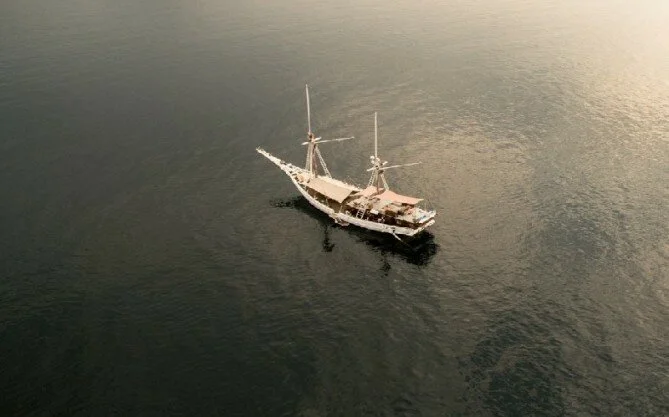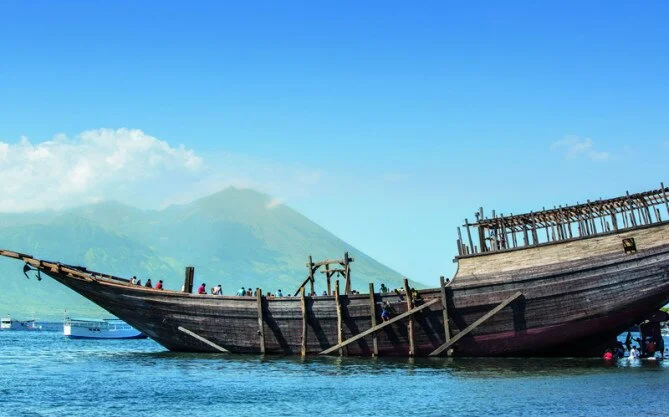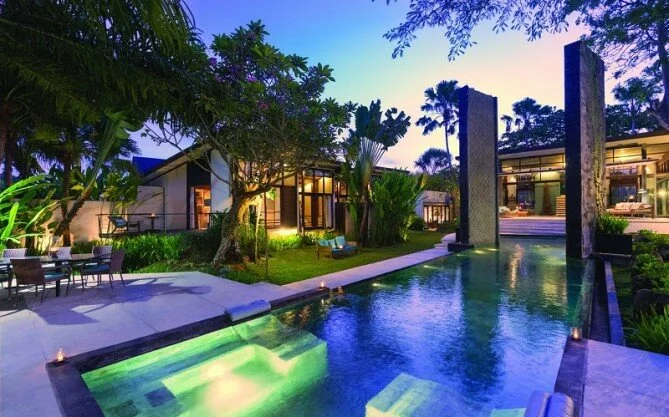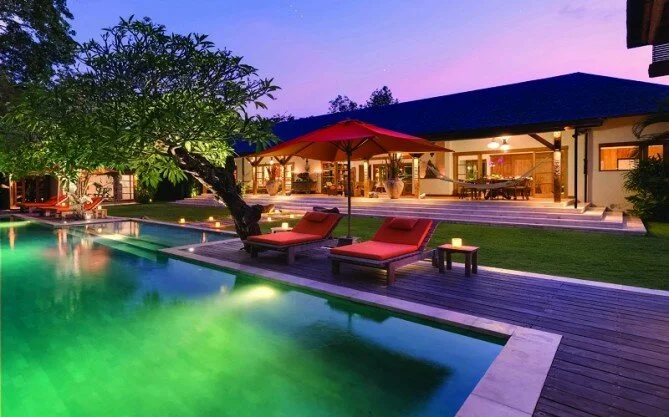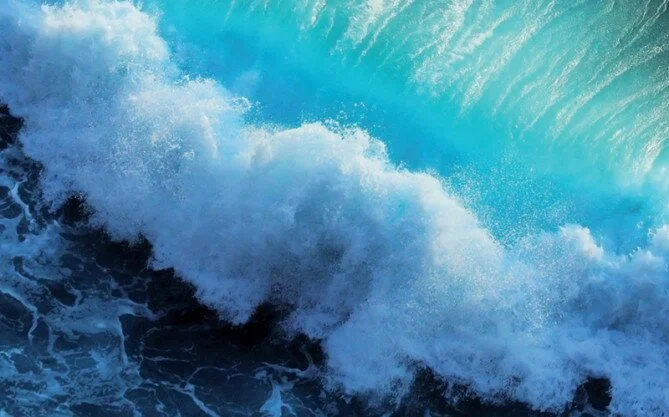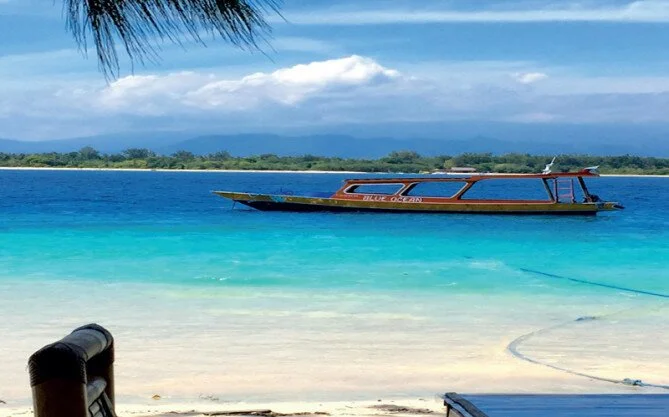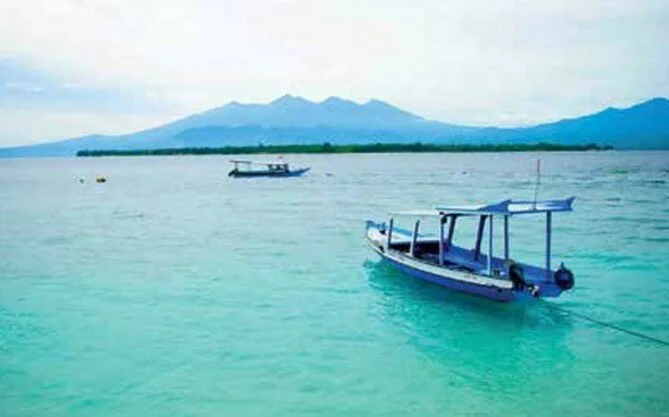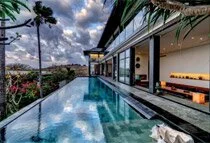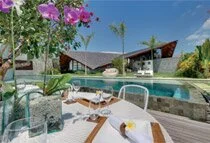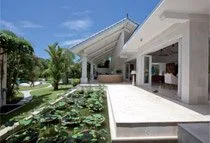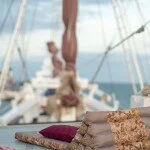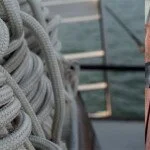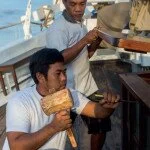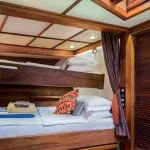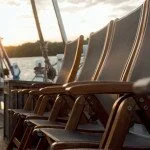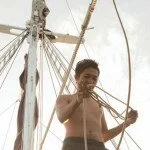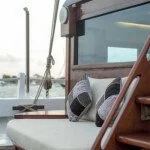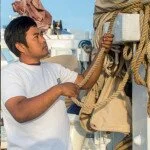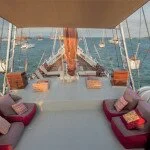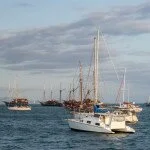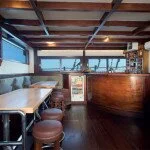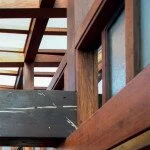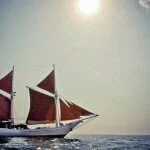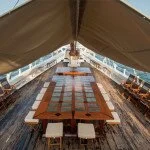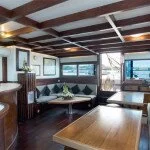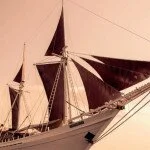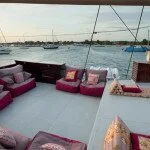Renovating a house is easy. Call a contractor, buy the materials, and get them delivered to your house – all you have to do is pay for it. But what do you do when that project is a 40m long, wooden phinisi schooner named Katharina that still needs to keep sailing and she’s moored in the harbour off Bali? You plan your time with military precision, you get creative, and you bring in the Bugis Men.
One of two ships owned and operated by Sea Trek Sailing; a Bali-based company that specialises in sea voyages and adventures across the Indonesian archipelago, visiting exotic places that very few people get to see, Katharina is a 40-metre long, traditional Indonesian sailing ship, and she is beautiful. She sits low in the water, has a sensual curve to her decks and the white hull and maroon sails paint a picture postcard upon the ocean waves wherever she sails.
Unfortunately, life on the ocean waves is tough on a girl and regular maintenance on her decks, engines, and rigging is a must to keep her at her best. That wear and tear also plays havoc on the ships interiors – and so does fashion – and since Katharina is approaching 20 years old, with her last re-fit being in 2007, she is currently being treated to some pampering and love by her owners. “We felt that we needed top bring Katharina back to her more original state staying as close to the local traditions as possible and make her original,” explains Joris Kolijn, Seatrek’s General manager and no stranger to sailing.
The brief for the job was suggest ways of bringing her to the top of the market quality level over a three-year time frame and to accomplish the upgrades without disrupting the charter operation. This meant breaking down the work into a couple of large tasks that would happen during the three-month off-season, then accomplish a series of smaller tasks in short two- to five-day projects in between cruises as the boats returned to Bali for provisioning.
Renovating a boat can be extremely easy if you have a dry dock from which to work. Facilities like that just don‘t exist in Bali, so everything has do be done while the ship is at anchor. This obviously presents a few problems and limitations; from the timing of the delivery of materials to the transportation to the ship, each step has to be planned with military precision so that time and energies are not wasted.
“Everything that comes out to the boat has to be able to fit in a small tender boat, so things need to come out in manageable sizes,” says Joris. “There are no cranes or forklifts out there so planning and staging are very important. The boat also has to keep floating and functioning while it is being worked on and the boat has to keep generating power for the crew to operate machinery. Apart from that, the crew also still needs to live on the boat while they are tearing it apart so they need to allow for day-to-day living to work around the maintenance of the boat. “The boys can’t just knock off and go home each evening’” says Joris. “This is their home!”
To oversee the design and to manage the project, Joris employed the skills of Frank Hyde and Jeni Kardinal, two American architects with a love of the sea and all things sailing, who he had met about two years ago when Frank was working on another vessel. He suggested they come and bring their expertise and energy to Katharina and they started work at the end of 2013, just in time to start redesigning the interiors and public spaces.
The original 14 guest cabins were reduced to 12 to allow for a less crowded feel, and they were completely remodelled with new beds, bathrooms and skylights and back-lit lattice screens to let in more light. Previously the downstairs area was quite dark, since being so low to the water the design doesn’t allow for portholes, which would weaken the integrity of the hull. The solution was to raise and remodel the hatchway on the main deck and fit it with specially fired glass to act as a skylight, allowing daylight to seep in as well as providing an extra emergency exit.
The raised hatchway also acts as a communal dining table and has been beautifully designed using a combination of ironwood for the main posts, merbau for the top, and dark rosewood called sonokeling for the hinges, the whole thing being a real showpiece in master craftsmanship. The main saloon and outdoor deck seating were also given a major going over with new furnishings and wooden accents throughout adding comfort and modernity, which will certainly be enjoyed by the next generation of adventurous travellers.
As talented an architect as Frank is – and Katharina has certainly benefited from his vision – he saves his praise for the boat’s handpicked Konjo crew of ship’s carpenters and master craftsmen, whose skills and talents have made it all possible. “The Sulawesi boys that do the work are truly amazing and the level of craftsmanship is outstanding,” says Frank. “They are so humble and they astound me with their no-nonsense approach to building and problem solving.”
Hailing from a small town in southern Sulawesi called Ara, the Konjo people have a long history in building wooden boats that goes back centuries. They are the descendants of the original Bugis seafarers who have plied the water’s of Asia for hundreds of years, trading, fishing and pirating, and what they don‘t know about seafaring and boat building isn’t worth knowing. Their tools and techniques are the same that their forefathers have used for 500 years (barring the power tools, of course) like hand saws and handmade, wooden spiral-grain mallets, and the use of wooden pins in the place of nails and double-step mitring designed to stop leaks and warping.
“They have worked with wood and on boats from a very young age,” explains Frank. “But maybe even more importantly they have unparalleled pride in what they do and an incredible ‘can do’ attitude that makes them the most special guys to work with that I have ever experienced. Sometimes I think their favourite word, always followed by a smile, is bisa (‘can’),” jokes Frank. ”Small miracles happen on a daily by combining great design with amazing skill. It really is a privilege to be able to work with them.”
At the time of writing, this year’s work is almost complete and Katharina is about to resume her sailing schedule as of August. She will be taken out of service again in 2015, with the plan to raise the wheelhouse and redo the galley and replace the deck, but that’s a year away.
Right now Katharina is set to take to the high seas once more, looking gorgeous and feeling even better, ready to astound her guests with her brand new design, superior craftsmanship, and new luxuries and comforts as she sails the length and breadth of the magical East Indies.
Michael Travers




